*NURSING > NCLEX-RN > FULL-TEXT: Nursing Prioritization, Delegation and Assignment NCLEX Practice (100 Questions) UPDATED (All)
FULL-TEXT: Nursing Prioritization, Delegation and Assignment NCLEX Practice (100 Questions) UPDATED ON OCTOBER 5, 2021 BSN, R.N.
Document Content and Description Below
FULL-TEXT: Nursing Prioritization, Delegation and Assignment NCLEX Practice (100 Questions) UPDATED ON OCTOBER 5, 2021 BSN, R.N. NPDA-1-001 A 16-year old patient with cystic fibrosis is admitted wi ... th increased shortness of breath and possible pneumonia. Which nursing activity is most important to include in the patient’s care? A. Perform postural drainage and chest physiotherapy every 4 hours. B. Allow the patient to decide whether she needs aerosolized medications. C. Place the patient in a private room to decrease the risk of further infection. D. Plan activities to allow at least 8 hours of uninterrupted sleep. Correct Answer: A. Perform postural drainage and chest physiotherapy every 4 hours. Airway clearance techniques are critical for patients with cystic fibrosis and should take priority over other activities. The Cystic Fibrosis Transmembrane Conductance Regulator defect causes mucus to become dehydrated. Secretions in cystic fibrosis are generally thick, sticky, and more difficult to clear. Frequent airway clearance is a mainstay in the treatment of acute exacerbations, as well as an integral part of health maintenance in cystic fibrosis. Option B: Although allowing more independent decision-making is important for adolescents, the physiologic need for an improved respiratory function takes precedence at this time. Collaborate with the client and staff to ensure that the schedule for therapy is amenable to all and does not interfere with meals, rest times, or medications. Option C: A private room may be desirable for the patient but is not necessary. Ensure that clients with CF are not cohorted. The cohorting of clients with CF is not recommended based on published CF Infection Control Consensus Guidelines. Option D: With increased shortness of breath, it will be more important that the patient has frequent respiratory treatments than 8 hours of sleep. Infection, inflammation, and mucous plugging will cause an increase in the respiratory effort to compensate for airway obstruction. As moving air into and out of the lungs becomes more difficult, the breathing pattern alters to include the use of accessory muscles and retractions. NPDA-1-002 A patient with a pulmonary embolism is receiving anticoagulation with IV heparin. What instructions would you give the nursing assistant who will help the patient with activities of daily living? Select all that apply. A. Use a lift sheet when moving and positioning the patient in bed. B. Use an electric razor when shaving the patient each day. C. Use a soft-bristled toothbrush or tooth sponge for oral care. D. Use a rectal thermometer to obtain a more accurate body temperature. E. Be sure the patient’s footwear has a firm sole when the patient ambulates. Correct Answers: A, B, C, and E.All of the other instructions are appropriate to the care of a patient receiving anticoagulants. Risk for bleeding may arise in any condition that disturbs the “close circuit” integrity of the circulatory system. Bleeding is the primary complication of anticoagulant therapy and is a risk of all anticoagulants even when maintained within the usual therapeutic ranges. Option A: Educate the at-risk patient about precautionary measures to prevent tissue trauma or disruption of the normal clotting mechanisms. Information about precautionary measures lessens the risk for bleeding. Option B: Be careful when using sharp objects like scissors and knives. Use an electric razor for shaving (not razor blades). The patient needs to avoid situations that may cause tissue trauma and increase the risk for bleeding. Option C: Use a soft-bristled toothbrush and nonabrasive toothpaste. Avoid the use of toothpicks and dental floss. This method providing oral hygiene reduces trauma to oral mucous membranes and the risk for bleeding from the gums. Option D: While a patient is receiving anticoagulation therapy, it is important to avoid trauma to the rectal tissue, which could cause bleeding (e.g., avoid rectal thermometers and enemas). These invasive devices or medications may cause trauma to the mucous membranes that line the rectum or vagina. Option E: Educate the patient and family members about signs of bleeding that need to be reported to a health care provider. Early evaluation and treatment of bleeding by a health care provider reduces the risk for complications from blood loss. NPDA-1-003 A patient with acute respiratory distress syndrome (ARDS) is receiving oxygen by a nonrebreather mask, but arterial blood gas measurements still show poor oxygenation. As the nurse responsible for this patient’s care, you would anticipate a physician order for what action? A. Perform endotracheal intubation and initiate mechanical ventilation. B. Immediately begin continuous positive airway pressure (CPAP) via the patient’s nose and mouth. C. Administer furosemide (Lasix) 100 mg IV push stat. D. Call a code for respiratory arrest. Correct Answer: A. Perform endotracheal intubation and initiate mechanical ventilation A non-rebreather mask can deliver nearly 100% oxygen. When the patient’s oxygenation status does not improve adequately in response to the delivery of oxygen at this high concentration, refractory hypoxemia is present. Usually, at this stage, the patient is working very hard to breathe and may go into respiratory arrest unless healthcare care providers intervene by providing intubation and mechanical ventilation to decrease the patient’s work of breathing. Option B: To maintain oxygenation, ARDSnet recognizes the benefit of PEEP. The protocol allows for a low or a high PEEP strategy relative to FiO2. Either strategy tolerates a PEEP of up to 24 cm HO in patients requiring 100% FiO2. Interestingly, the mode in which a patient is ventilated affects lung recovery. Evidence suggests that someventilatory strategies can exacerbate alveolar damage and perpetuate lung injury in the context of ARDS. Option C: The chief treatment strategy is supportive care and focuses on 1) reducing shunt fraction, 2) increasing oxygen delivery, 3) decreasing oxygen consumption, and 4) avoiding further injury. Patients are mechanically ventilated, guarded against fluid overload with diuretics, and given nutritional support until evidence of improvement is observed. Option D: The major cause of death in patients with ARDS was sepsis or multiorgan failure. While mortality rates are now around 9% to 20%, it is much higher in older patients. ARDS has significant morbidity as these patients remain in the hospital for extended periods and have significant weight loss, poor muscle function, and functional impairment. NPDA-1-004 The nurse is caring for a patient with chronic obstructive pulmonary disease (COPD). Which intervention for airway management should you delegate to a nursing assistant? A. Assisting the patient to sit up on the side of the bed. B. Instructing the patient to cough effectively. C. Teaching the patient to use incentive spirometry. D. Auscultation of breath sounds every 4 hours. Correct Answer: A. Assisting the patient to sit up on the side of the bed. Assisting patients with positioning and activities of daily living is within the educational preparation and scope of practice of a nursing assistant. Some examples of tasks and aspects of care that can be delegated legally to nonprofessional, unlicensed assistive nursing personnel, provided they are competent in these areas, under the direct supervision of the nurse include assistance with transfers, range of motion, feeding, ambulation, and other tasks such as making beds and assisting with bowel and bladder functions. Option B: The staff members’ levels of education, knowledge, past experiences, skills, abilities, and competencies are also evaluated and matched with the needs of all of the patients in the group of patients that will be cared for. Option C: Teaching, instructing, and assessing patients all require additional education and skills and are more appropriate for a licensed nurse. Based on the basic entry educational preparation differences among these members of the nursing team, care should be assigned according to the level of education of the particular team member. Option D: Among the tasks that cannot be legally and appropriately delegated to nonprofessional, unlicensed assistive nursing personnel, such as nursing assistants, patient care technicians, and personal care aides, include assessments, nursing diagnosis, establishing expected outcomes, evaluating care and any and all other tasks and aspects of care including but not limited to those that entail sterile technique, critical thinking, professional judgment, and professional knowledge. NPDA-1-005A patient with sleep apnea has a nursing diagnosis of Sleep Deprivation related to disrupted sleep cycle. Which action should you delegate to the nursing assistant? A. Discuss weight-loss strategies such as diet and exercise with the patient. B. Teach the patient how to set up the BiPAP machine before sleeping. C. Remind the patient to sleep on his side instead of his back. D. Administer modafinil (Provigil) to promote daytime wakefulness. Correct Answer: C. Remind the patient to sleep on his side instead of his back. The nursing assistant can remind patients about actions that have already been taught by the nurse and are part of the patient’s plan of care. The right person must be assigned to the right tasks and jobs under the right circumstances. The nurse who assigns the tasks and jobs must then communicate with and direct the person doing the task or job. The nurse supervises the person and determines whether or not the job was done in the correct, appropriate, safe, and competent manner. Option A: Among the tasks that cannot be legally and appropriately delegated to nonprofessional, unlicensed assistive nursing personnel, such as nursing assistants, patient care technicians, and personal care aides, include assessments, nursing diagnosis, establishing expected outcomes, evaluating care, and any and all other tasks and aspects of care including but not limited to those that entail sterile technique, critical thinking, professional judgment, and professional knowledge. Option B: The registered nurse must also ensure that the delegated tasks are permissible according to the nursing team members’ position description which is also referred to as the job description, and the particular facility’s specific policies and procedures relating to client care and who can and who cannot perform certain tasks. Option D: Discussing and teaching require additional education and training. These actions are within the scope of practice of the RN. The RN can delegate the administration of medication to an LPN/LVN. NPDA-1-006 [Show More]
Last updated: 3 years ago
Preview 1 out of 71 pages
.png)
Buy this document to get the full access instantly
Instant Download Access after purchase
Buy NowInstant download
We Accept:

Reviews( 0 )
$11.00
Can't find what you want? Try our AI powered Search
Document information
Connected school, study & course
About the document
Uploaded On
Apr 29, 2022
Number of pages
71
Written in
All
Additional information
This document has been written for:
Uploaded
Apr 29, 2022
Downloads
0
Views
179


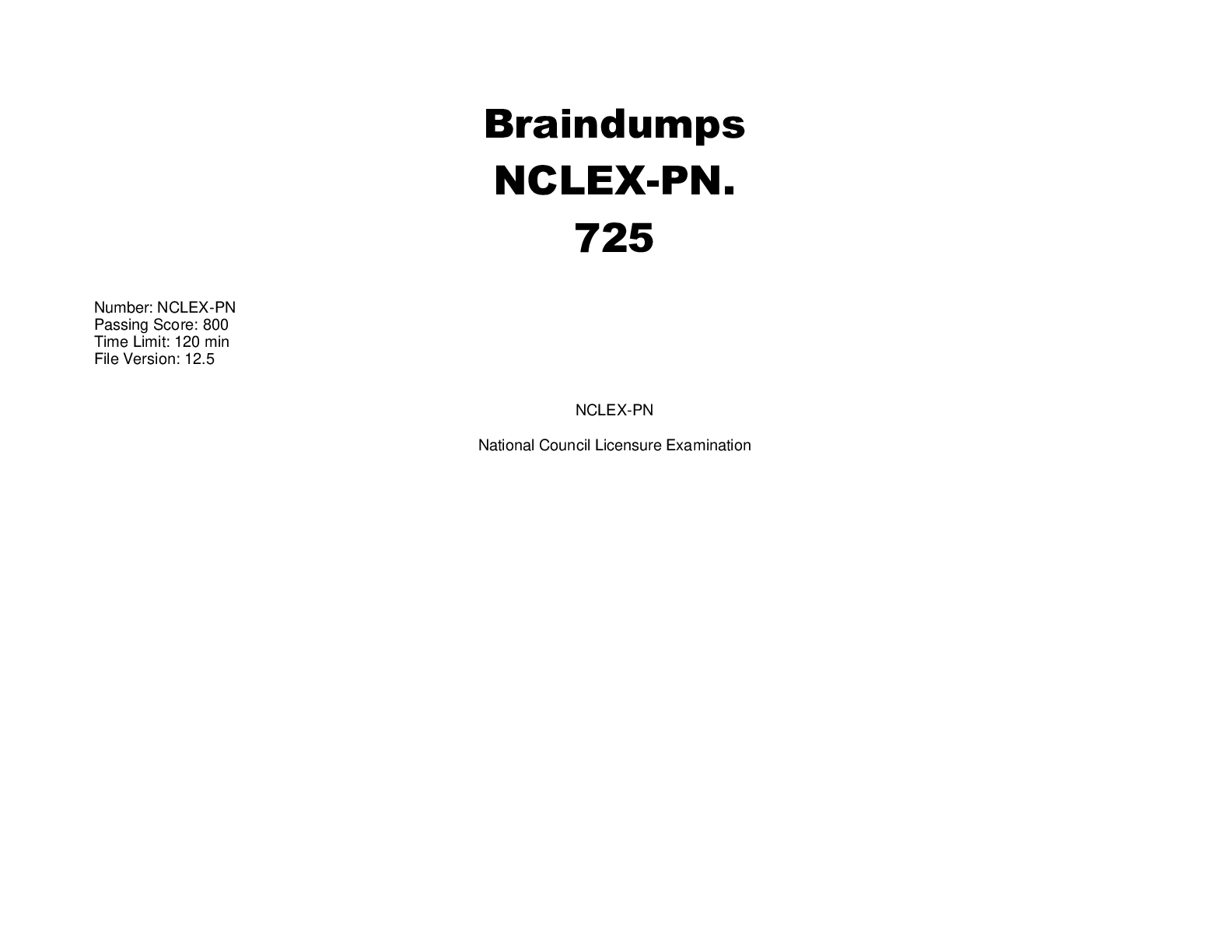





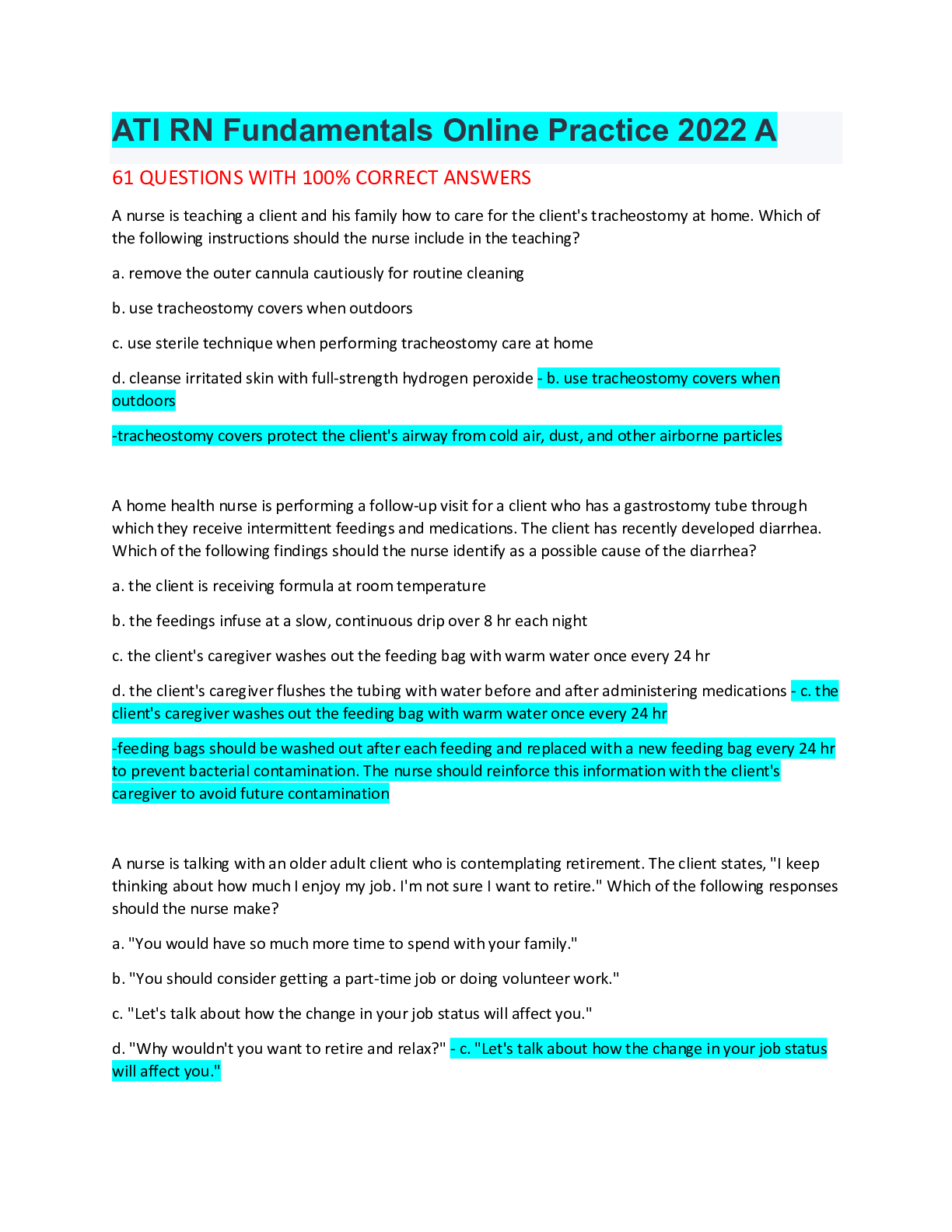




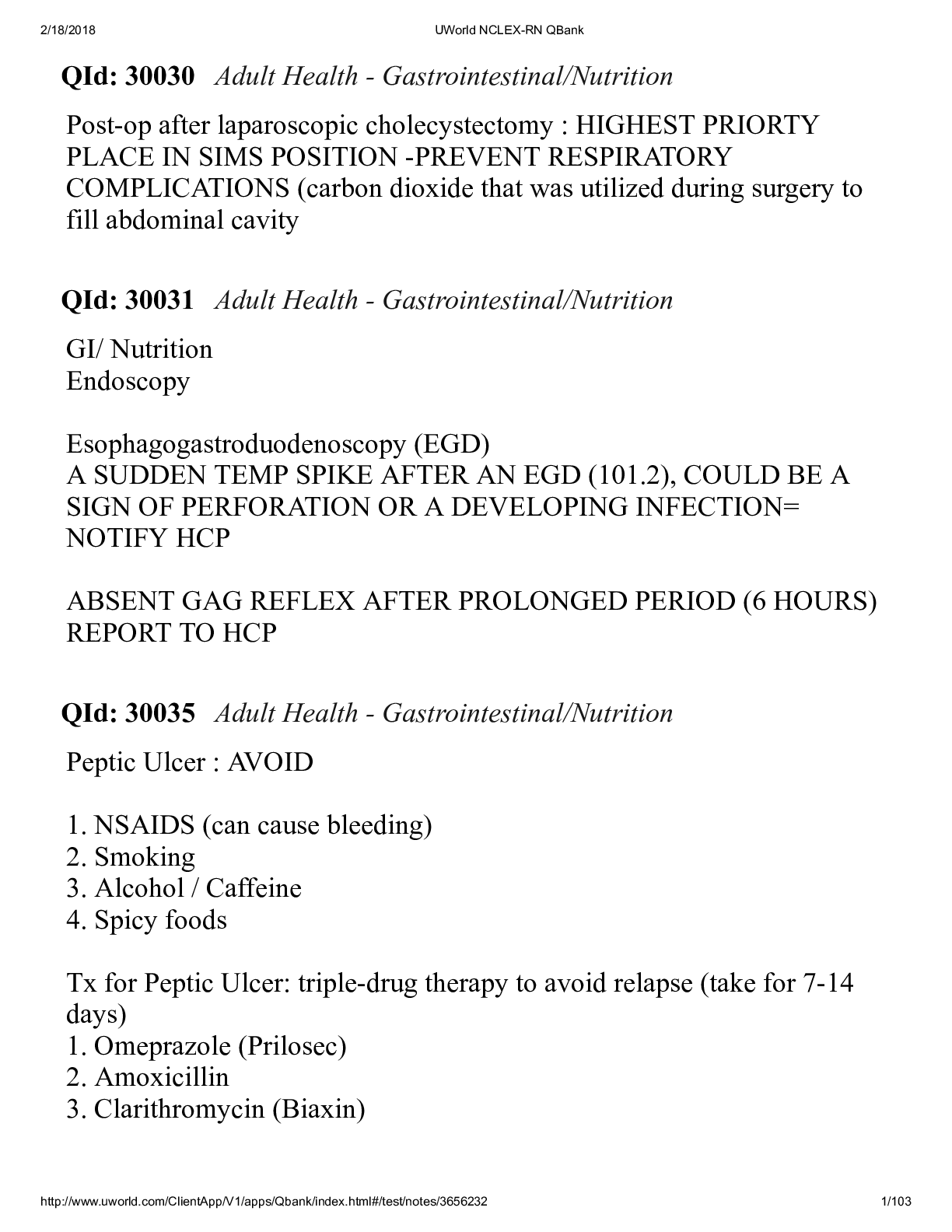


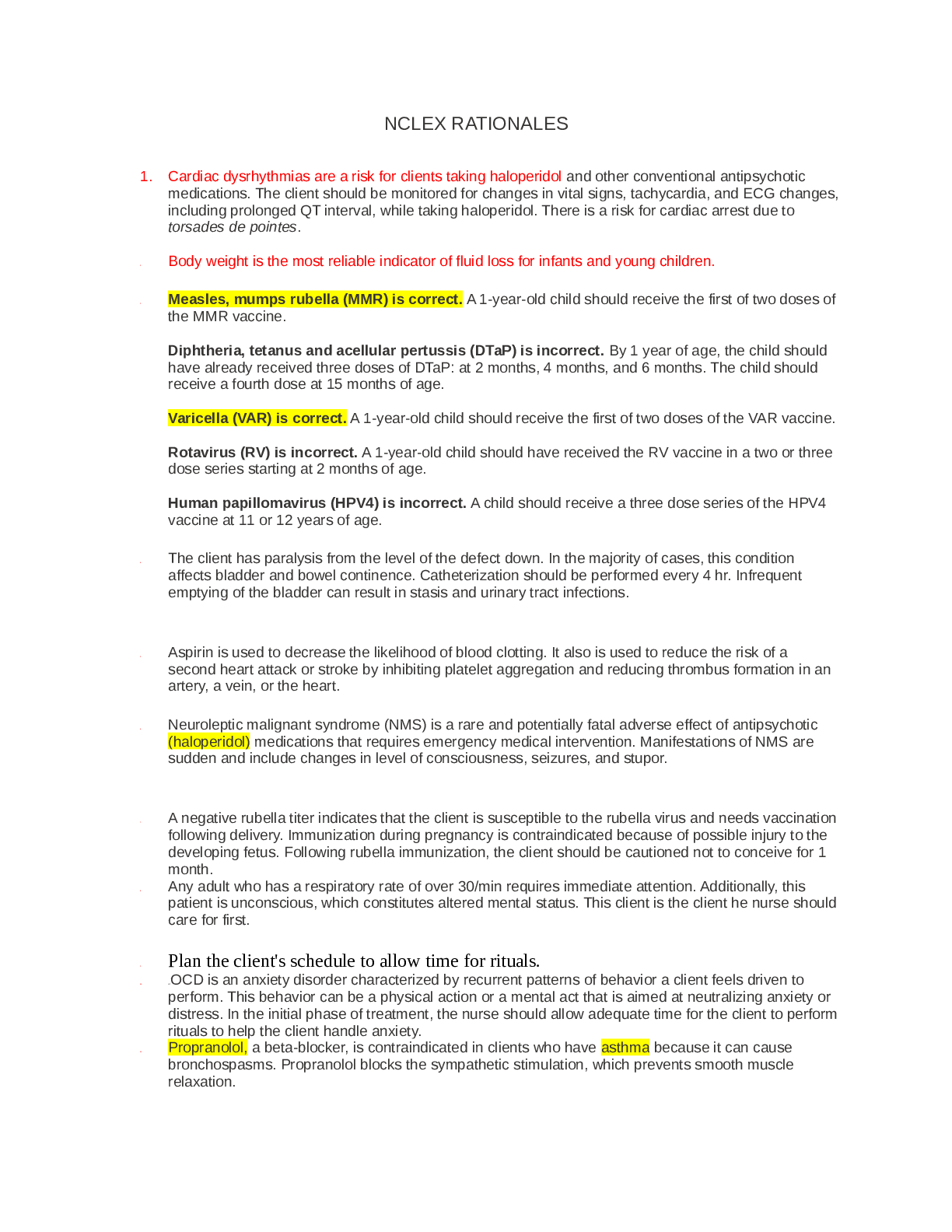

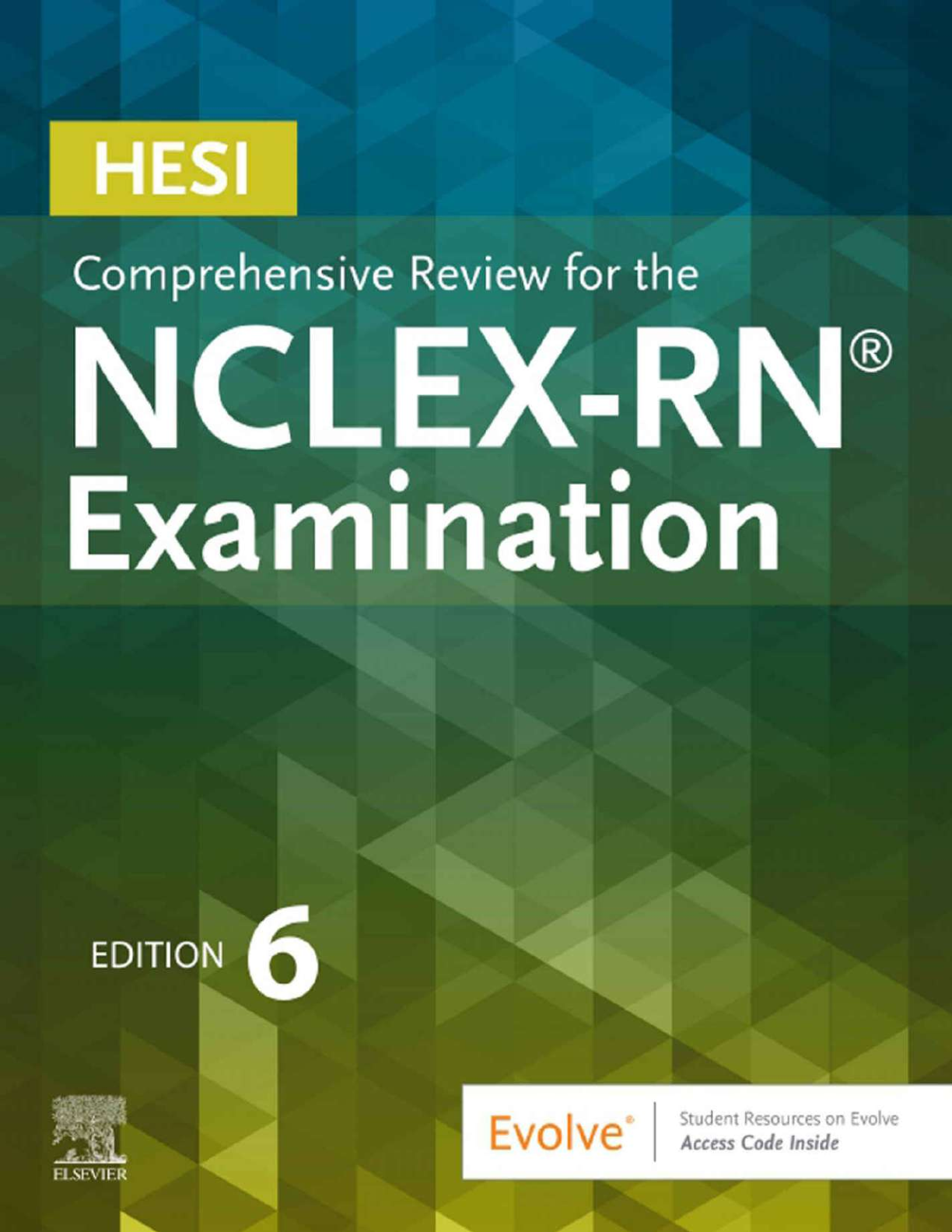

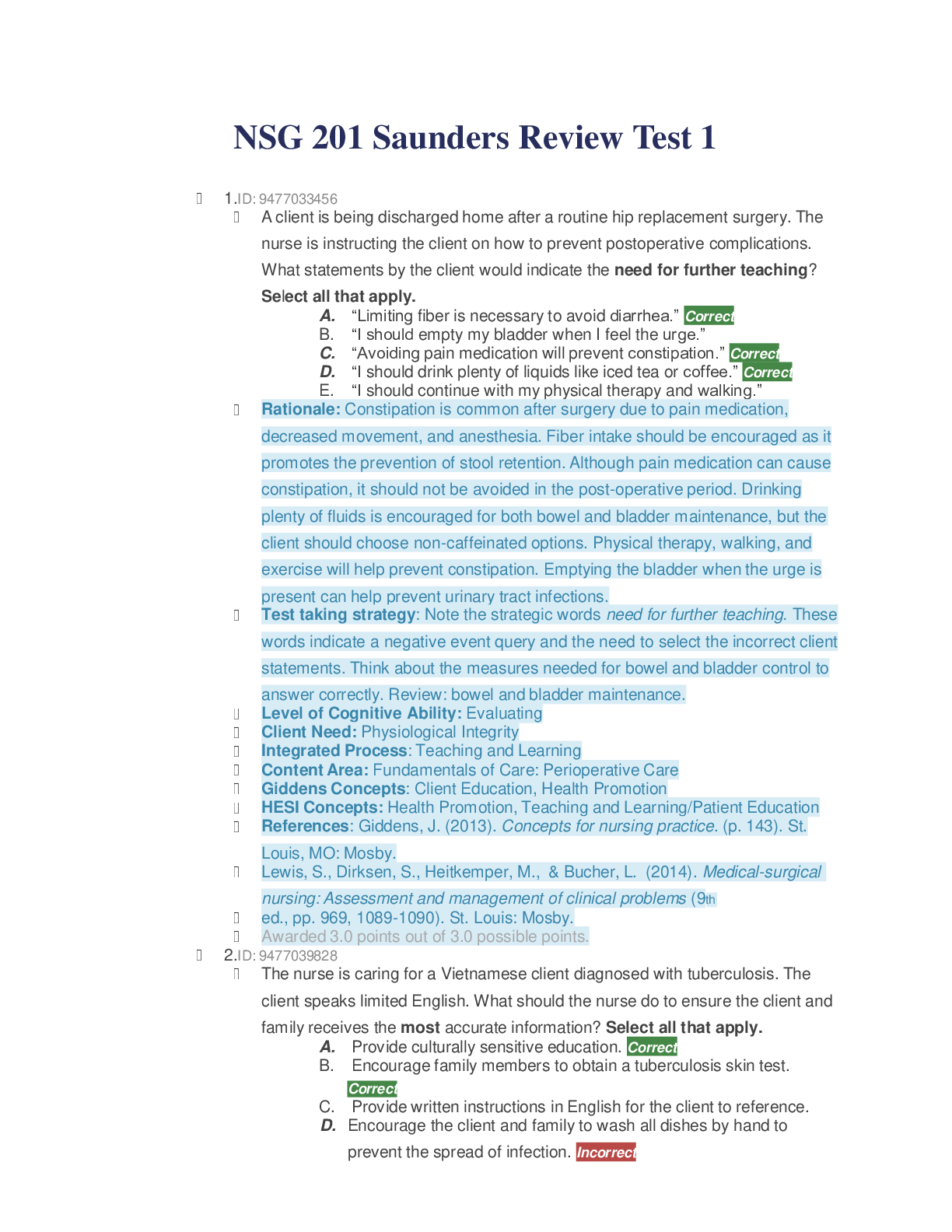
NCLEX.png)

